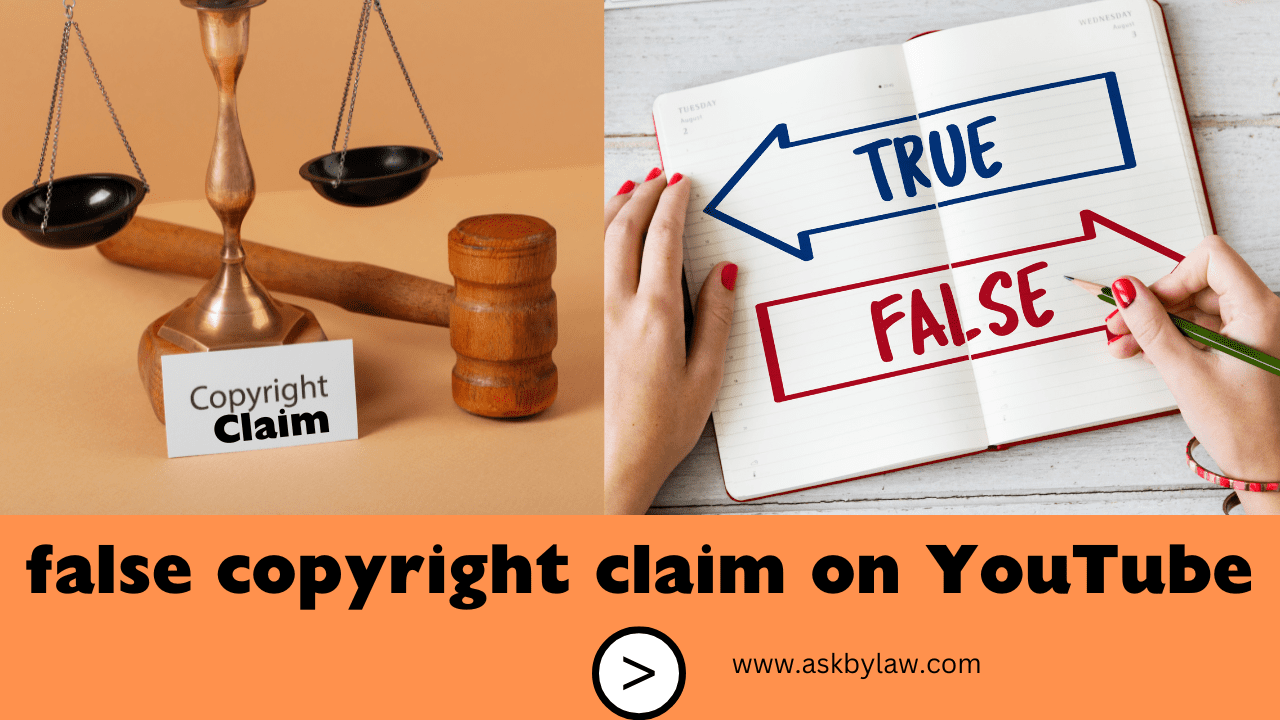

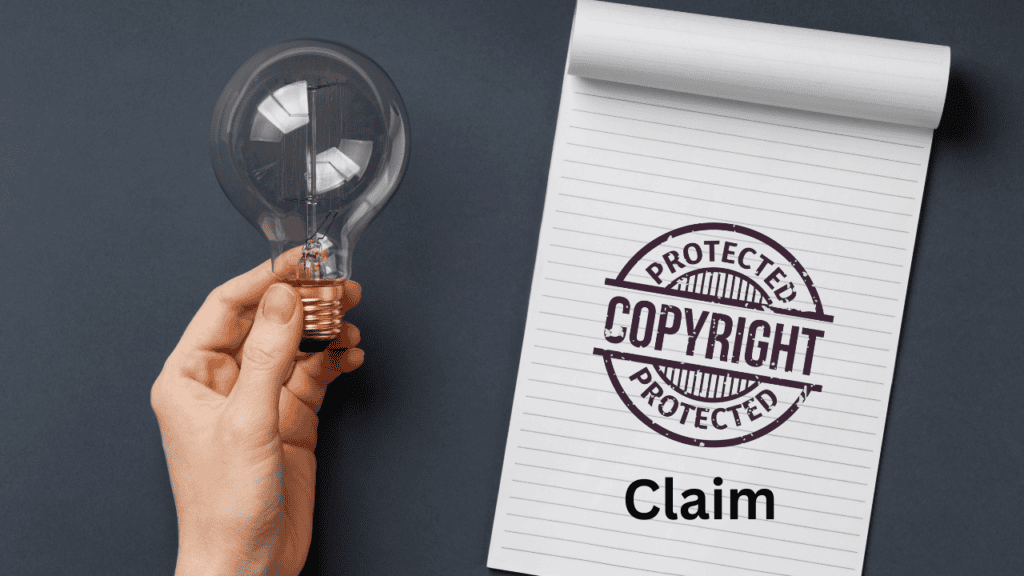
Creating digital property and creating income enjoyment is an imperative thought and careful endeavor, including false copyright claims on YouTube. When an original creator is accused of a false copyright claim, the genuine content creator can protect their original content creation if they seek to obtain, a strong cover of the law to protect their original creation. Often, due to misconceptions about the law and the negative experiences of well-wishers, the original creator neglects the protection of the law. As a result, he cannot properly defend his original content creation due to imaginary bias. This has led to a huge surge in fraudulently false copyright medicines, which raises many questions, and tensions about creation and reward.
Our article will help you find the motive behind a false copyright claim and inspire you to protect your original content creation in the world of intellectual property and be stress-free by making the creator aware and getting legal protection. To read

When a person self-identifies content or intellectual property created by fraudulent means, another person claims to have created the content. A false copyright claim makes such a claim and opposes and claims to deprive the creator of the original content or intellectual property from its use. Such claims are mostly found in video content. To read
Your initial reaction might be to assume that all claims are false, but that's not the case. Some claims are legitimate and made for various reasons.
There are cases where copyright claims are genuinely false. Here are three common scenarios:
Getting false copyright claim on YouTube videos can indeed be frustrating, especially when they are false. However, it’s essential to recognize that not every claim is illegitimate. Let’s explore how you can identify false claims and strategies for dealing with them:
If you use a song by your favorite artist in your video, and YouTube detects it. You’ll receive a copyright claim. This isn’t necessarily false; it means YouTube’s Content ID system detected copyrighted music, and ads may appear in your video in exchange for using the music.
Even if you purchased a license from a royalty-free music library, you might still receive a claim, in most cases. This is a valid claim, as stock music composers protect their work from unlicensed use.
There are cases when claims are genuinely false. Here are some typical scenarios:
YouTube’s Content ID system relies on a vast database of reference music tracks submitted by copyright owners. Unfortunately, some references aren’t legitimate. These include:
Some individuals maliciously attempt to remove content from YouTube by falsely asserting copyright ownership. YouTube reviews such requests to ensure they’re not abusive.
YouTube reported nearly 2.2 million false copyright claims in six months, with many videos later reinstated after determining the claims were incorrect.
If your video receives a Content ID claim, dispute it if you have valid reasons (e.g., you have all necessary rights to the content).
Use relevant evidence, such as license certificates, to support your case.
Persistence is necessary to resolve false claims. Keep communicating with YouTube and provide clear explanations.
Disputing a false copyright claim on YouTube involves several steps. Here’s a guide to help you navigate the process:
Location of the video that received the copyright claim. Visit your YouTube studio and find the video in question.
Click on the video to view the claim details. Understand which part of your video triggered the claim (e.g., specific music, visuals, or other content).
If your video falls under fair use, you can dispute the claim. Fair use includes commentary, criticism, education, and transformative content.
If you have the necessary licenses or permissions for the content, dispute the claim.
If the content is in the public domain it cannot be claimed.
Sometimes, claims are made in error due to similarities. Explain why your content is distinct.
If you used Creative Commons-licensed material correctly, dispute the claim.
Parodies and satirical content are protected under fair use.
If you believe the claimant is mistaken, you can file a counter-notification.
If your video doesn’t infringe any copyright, dispute the claim.
If you purchased music or visuals legally
Explain how your video qualifies as fair use.
if applicable
Show where your content differs from the claimed material.
Removing a copyright claim on YouTube can be a bit tricky, but I’ll guide you through the process. Here are the steps you can take:
When you upload a video to YouTube, the platform now automatically checks for copyrighted material. Before hitting the publish button, YouTube will inspect your content and notify you if any copyrighted material is detected.
You’ll see this in the Checks section during the upload process. It’s a game-changer because it lets you know about copyright matches before your video goes live.
You can then decide on the best course of action, whether it’s disputing the claim or taking steps to remove it.
On the same upload page, expand the details of the copyright claim by clicking “See Details,”
If you decide to move forward and upload the video, you have options:
Definitely, yes, a copyright claim on your YouTube video can indeed affect your views and monetization. Here’s how:
YouTube is less likely to recommend videos with copyrighted material. If your video contains copyrighted content, it might receive fewer views due to this recommendation algorithm. Additionally, some viewers might avoid videos with copyright claims.
If your channel isn’t monetized yet, you need to reach 1,000 subscribers and accumulate 4,000 total watch hours to qualify. However, copyrighted videos don’t count toward these watch hours. So, if your videos are copyright-claimed, they won’t contribute to meeting the threshold for monetization.
The copyright owner may restrict your video from appearing in certain regions or even block it entirely.
YouTube’s algorithm considers copyright claims when recommending videos. If your video has a claim, it might not be suggested as frequently.
When it comes to adding music to your videos without running into copyright issues, there are several alternatives you can explore:
Lickd offers access to a vast catalog of mainstream music from well-known artists. You can license popular tracks for your videos, and they’ll take care of any copyright claims for you.
Snapmuse provides royalty-free music that you can use in your YouTube videos. It’s a great resource for finding music without worrying about copyright restrictions.
Look for music released under Creative Commons licenses. These licenses allow creators to use the music for free, as long as they follow specific terms (like giving credit to the artist).
Public domain music is not protected by copyright and is free to use. You can find classical compositions, traditional folk songs, and other works that have entered the public domain.
Create your own music! If you’re musically inclined, compose original tunes for your videos. This ensures complete ownership and avoids any copyright issues.
Creating your own original music can be a rewarding and fulfilling experience. Here are some tips to get you started:
Listen to a wide variety of music across different genres. Pay attention to melodies, harmonies, rhythms, and instrumentation. Inspiration can strike from unexpected places.
If you don’t already play an instrument, consider learning one. Whether it’s the guitar, piano, or even electronic music production software, having an instrument at your disposal opens up creative possibilities.
Start by playing simple chords and experimenting with different progressions. Try major, minor, and seventh chords. Combine them to create unique sequences.
Melodies are the heart of any song. Hum or play around with notes until you find a catchy tune. Use scales as a foundation and explore different intervals.
If you’re interested in writing lyrics, jot down your thoughts, emotions, and experiences. Lyrics can add depth and meaning to your music.
Invest in recording equipment or use digital audio workstations (DAWs) like Ableton Live, FL Studio, or Logic Pro. Learn how to record, edit, and mix your tracks.
Explore synthesizers and sound libraries. Create unique sounds by tweaking parameters like filters, oscillators, and effects.
Collaborating with other musicians can lead to fresh ideas. Work with vocalists, instrumentalists, or producers to enhance your music.
Share your work with friends, family, or online communities. Constructive feedback helps you improve. Don’t be afraid to iterate and refine your compositions.
Music creation is a journey. Be patient with yourself, and stay curious. Learn from both successes and failures.
Promoting your original music online is crucial for gaining visibility and growing your fan base. Here are eight effective steps to help you get started:
Establish a professional online presence by creating a dedicated music website. Use platforms like WordPress/ Wix to build a site where fans can learn more about you, listen to your music, and find links to your social media profiles.
Distribute your music on popular streaming platforms like Spotify, Apple Music, and Amazon Music. Samsung Music. These services allow you to reach a global audience and monetize your streams.
Leverage social media platforms such as Instagram, Facebook, Twitter, Tik-Tok, etc., . Share behind-the-scenes content, teasers, and engage with your audience. Consistency is key.
Compile a professional press kit that includes your bio, high-quality photos, music samples, and any notable achievements. This makes it easier for journalists, bloggers, and promoters to feature your music.
Reach out to music blogs and websites that align with your genre. Submit your music for reviews, interviews, or features. Positive coverage can introduce your music to new audiences.
Visual content is powerful. Create music videos for your songs and share them on YouTube and social media. Engage viewers with captivating visuals that complement your music.
Collaborate with fellow musicians, producers, or influencers. Joint projects can expand your reach and introduce your music to their followers.
Perform live whenever possible. Whether it’s virtual concerts or local gigs, live shows create a direct connection with fans. Promote your shows through social media, flyers, and local event listings.
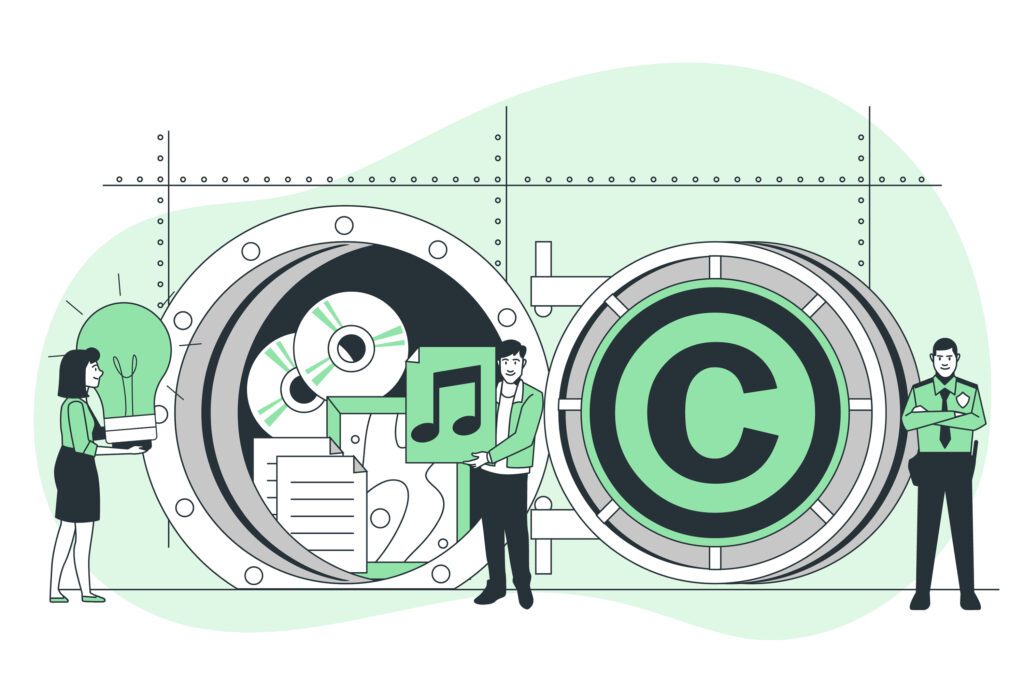
Judges evaluate fair use based on these factors:
The Purpose and Character of the Use: Is it for nonprofit educational purposes, commentary, criticism, research, or news reporting?
The Nature of the Copyrighted Work: Some works (e.g., factual or published) are more likely to be considered fair use.
The amount and substantiality of the portion used: Using a small portion is more likely to be fair use.
Effect on the market: If the use doesn’t harm the market for the original work, it’s more likely to be fair use.
Fair Use:
Definition: Fair use is a limitation and exception to the exclusive rights granted by copyright law to the author of a creative work.
Purpose and Character of Use:
Fair use involves unauthorized use that does not violate the copyright holder’s rights.
It is often transformative, adding new expression or meaning to the original material.
Commercial use can still qualify as fair use under certain circumstances.
Nature of the Copyrighted Work:
Fair use considers whether the use is outweighed by the public interest in its free dissemination.
It applies to various purposes like criticism, commentary, research, and news reporting.
Amount and Substantiality of Portion Used:
Fair use involves using a portion that is not substantial enough to appropriate the “heart” of the original work.
Effect on Market Value of Work:
Fair use does not harm the market or potential market for the original work.
Legal Basis: Section 107 of the U.S. Copyright Act outlines fair use criteria.
Copyright Infringement:
Definition: Infringement occurs when someone unauthorizedly uses a copyrighted work, violating the exclusive rights granted by copyright law.
Purpose and Character of Use:
Infringement does not further the purpose of copyright; it directly violates the holder’s rights.
Nature of the Copyrighted Work:
Infringement can appropriate the “heart” of the original work.
Amount and Substantiality of Portion Used:
Infringement involves using a portion substantial enough to harm the market for the original work.
Effect on Market Value of Work:
Infringement harms the market or potential market for the original work.
Legal Basis: Section 106 of the U.S. Copyright Act grants exclusive rights to creators.
Balancing Act:
Courts analyze fair use on a case-by-case basis, considering the four factors explicitly listed in section 107:
Purpose and character of the use
Nature of the copyrighted work
Amount and substantiality of the portion used
Effect on the market value of the work
Community Guidelines Strikes:
YouTube issues strike when your content violates the Community Guidelines.
Here’s how the system works:
First Strike: You receive a warning, but no immediate penalty.
Second Strike: Within a 90-day period, you face a two-week upload freeze (you can’t upload new content).
Third Strike: Another strike within the same 90-day period results in channel termination.
Copyright Strikes:
Copyright strikes occur when someone claims your content infringes their copyright.
If you receive multiple copyright strikes, your channel may be terminated.
You can file a counter notification if you believe the claims are incorrect.
Transparency and Appeals:
YouTube aims to be transparent about strikes, explaining why they occurred.
If you think a strike was a mistake, you can appeal it using the provided form.
Remember not to submit multiple appeal requests, as it can cause delays.
Today's article discusses the topic of false copyright claims on YouTube. I hope you find it useful.
Countering fraudulent copyright claims may seem difficult at first sight, but being well-informed and proactively confronting original content creators can save original content creators from undue interference with economic and social loss.
For original content creators considering false copyright claims as a potential strategy, it is important to understand that the legal and ethical consequences often outweigh any temporary and unfair benefits.
In today's environment where creativity is the pulse of digital content, adherence to proper copyright practices is an increasingly critical and imperative requirement. It is our culture to allow original art to flourish and protect it from obstruction. And every original content creator deserves their fair share of rewards.
Holders of false copyright claims do more than simply steal content. They create the illusion of being the original creator by stopping the flow of creativity, which violates the ethical lines of digital citizenship, which is why protecting original creativity is a constitutional right. A right of creation every original artist should get.

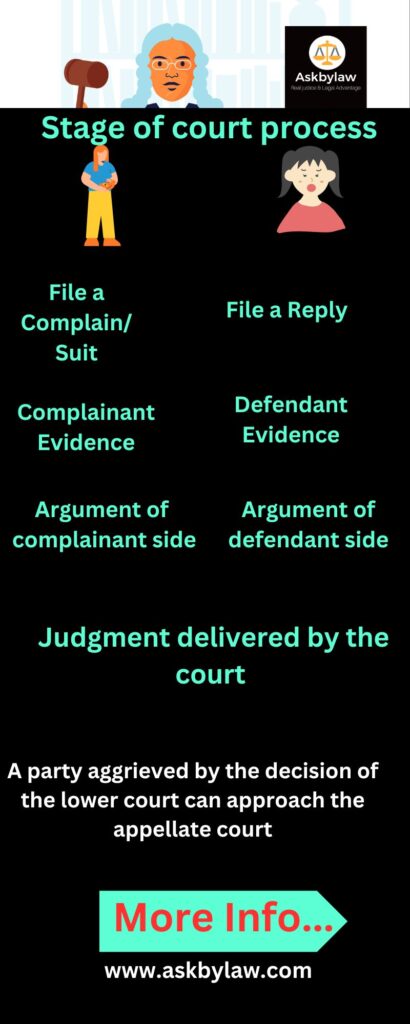


Founder And Main Partner of Askbylaw Associates

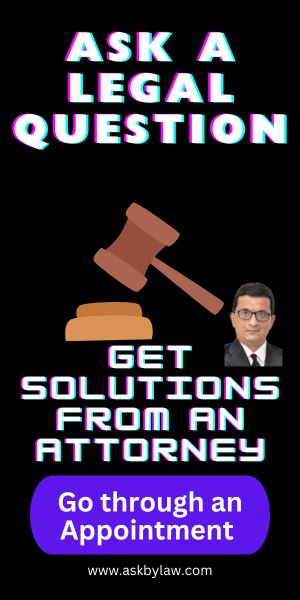
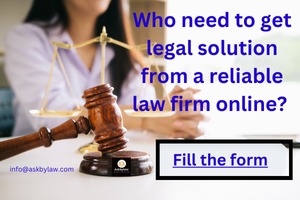



As per the foundations of the Bar Council of Bharat (India), Advocate Viren.S.Dave isn't permissible to solicit work and advertise. By clicking the “Agree” button and accessing this web site (www.asklbylaw.com) the user absolutely accepts that you just Maineasure seeking info of your own accord and volition which no kind of solicitation has taken place by me.The info provided below this web site is exclusively accessible at your request for information functions solely. It mustn't be understood as soliciting or advert. Advocate Viren.S.Dave isn't accountable for any consequence of any action taken by the user hoping on material / info provided below this web site. In cases wherever the user has any legal problems, he/she altogether cases should obtain freelance legal recommendation.